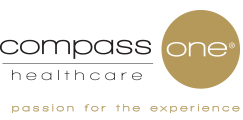
Five Strategies To Improve Patient Experience At Surgical Centers
In a culture characterized by options and hyper-personalization, ambulatory surgical centers are focused on creating excellent patient experiences. At minimum, patients expect to have their clinical needs met. However, beyond positive clinical outcomes, the difference between repeat visits or patients finding another health center is in creating a great experience.
Consider these five strategies to improve patient experience at your surgical center or other off-site healthcare facilities:
1. Make the patient experience personal
Sterile. It's a word often used to describe healthcare environments - and rightfully so - anything less than entirely sanitary would create patient safety and perception issues. Creating clean and safe environments is critical to improving the patient experience, but interpersonal encounters should feel anything but sterile. Humans are hardwired for connection, and cultivating a personal, approachable setting, goes a long way for anxious patients who check-in.
Train staff to call patients by name and acknowledge family members that come with them. Forbes recommends staff who are "off the clock" but are on the premises should be trained to politely address and smile at patients and visitors to avoid giving off an air of indifference. Encourage everyone to wear a name tag so patients can get more familiar with their caregivers.
For many surgeries - even minor ones - patients are not allowed to drive themselves home, so a friend or family member usually accompanies the patient. Because the patient experience is much more than just clinical outcomes, try a concierge service. A single, personal point of contact between guests and staff ensures clinical staff is free to care for patients, and someone is available to attend to guests in the waiting room.
Follow up with patients post-procedure. The one week out mark, or when physical therapy begins are good times to check-in and make sure everything is okay. While you may need to adjust staffing to do this, the personal phone call is a proactive way for physicians to learn about post-op complications, and the gesture alone communicates to your patients that you care.
2. Focus on the perception and reality of clean
Most people have experienced it: walking into a building with apparent traces of dust and dirt. No one wants that in their office, much less a healthcare facility or surgical center. Many patients consider cleanliness an indicator of the quality of care they will be receiving. Surgical centers that look and feel clean help patients, families, and staff feel comfortable and safe.
Consider this: one in every 31 patients in the United States has at least one healthcare-associated infection (HAI). ASCs tend to be less risky when it comes to contracting HAIs, but the CDC found that lapses in infection control can be frequent. So when healthcare leaders set out to improve patient experience, cleanliness isn't something to glance over. Personalization is great, but if patients still end up sick with an HAI, their experience and satisfaction with your facility are in the tank. Be sure your surgical center has a rigorous and repeatable process that addresses the perception and reality of clean.
3. Standardize across all locations
Rigorous and repeatable processes are impossible to achieve without standardization. Standardization is critical for infection prevention and other areas that impact the patient experience. Because risk increases with too much variation, multi-site healthcare facilities can maintain and improve the patient experience by standardizing areas like environmental services, online booking systems, cultural priorities, patient-communication standards, and training. Even design is important - not just for your ASC's brand but creating high reliability and safety. When clinical staff know where to look for what they need and what they need is where it belongs, they can spend their time and attention on patients. Keeping policies and procedures the same in every facility can also help control costs. And remember, the patient experience often begins in the ASC. Positive or negative impressions will travel to the Hospital and affect the overall experience.
4. Educating patients
The curse of knowledge can be a pitfall to positive and personal patient experiences. Remember, the majority (if not all) of patients have never attended medical school. Lots of terminologies are foreign and confusing. Clinical staff should take the time to sit with the patients to make sure they understand what's been communicated. Not only does educating your patients express care, but it also empowers your patients to manage their health after they leave.
Some physicians allow family members in pre-op rooms where nurses discuss post-op instructions. If this is possible at your facility, give it a try: these micro-moments get everyone on the same page and increase the likelihood that your patient doesn't return because of a misunderstanding. Sometimes it takes time to process information, so inviting patients to follow up in a phone call or email demonstrates the healthcare staff cares beyond the facility.
Even though healthcare, for the most part, still happens offline, providers can't ignore how consumer behavior has shifted. According to a Doctors.com survey, 80% of respondents said they researched online about a provider, even after they were preferred. Online accessible resources like blogs, white papers, and patient reviews all help equip and educate patients to make the best healthcare decision.
5. Prioritize convenience
Healthcare isn’t necessarily known for being a category marked by convenience, however, consumer expectations for convenience don't fade in a healthcare setting. Booking appointments and procedures can be confusing, time-consuming, and overwhelming. Because the patient experience begins long before check-in, simplifying the scheduling process contributes to the overall experience.
Automated, digital reminders help patients and can help limit no-shows, an additional complication for ASC staff who are already managing patient volume challenges. Lastly, while a full-blown foodservice operation probably isn't necessary at a surgical center, explore healthy vending or micro-market options that make it easy for guests to refuel while they wait on their family member or friend.
Healthcare leaders have several levers at their disposal to improve the patient experience. In an ASC, experiment with personalization, a focus on cleanliness and standardization, educating patients, and prioritizing convenience. Provided clinical outcomes are positive, these areas could be the difference between a repeat visit or not.


